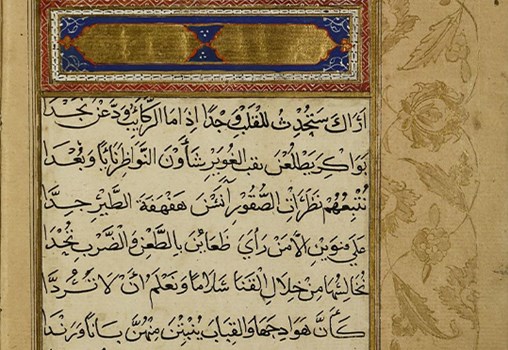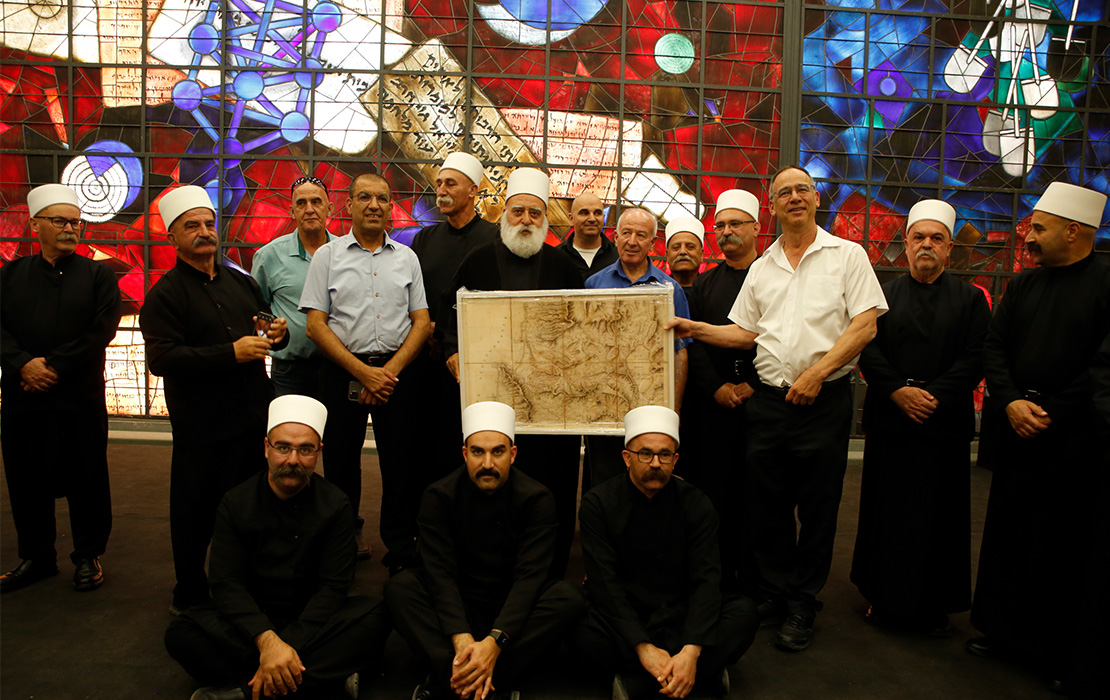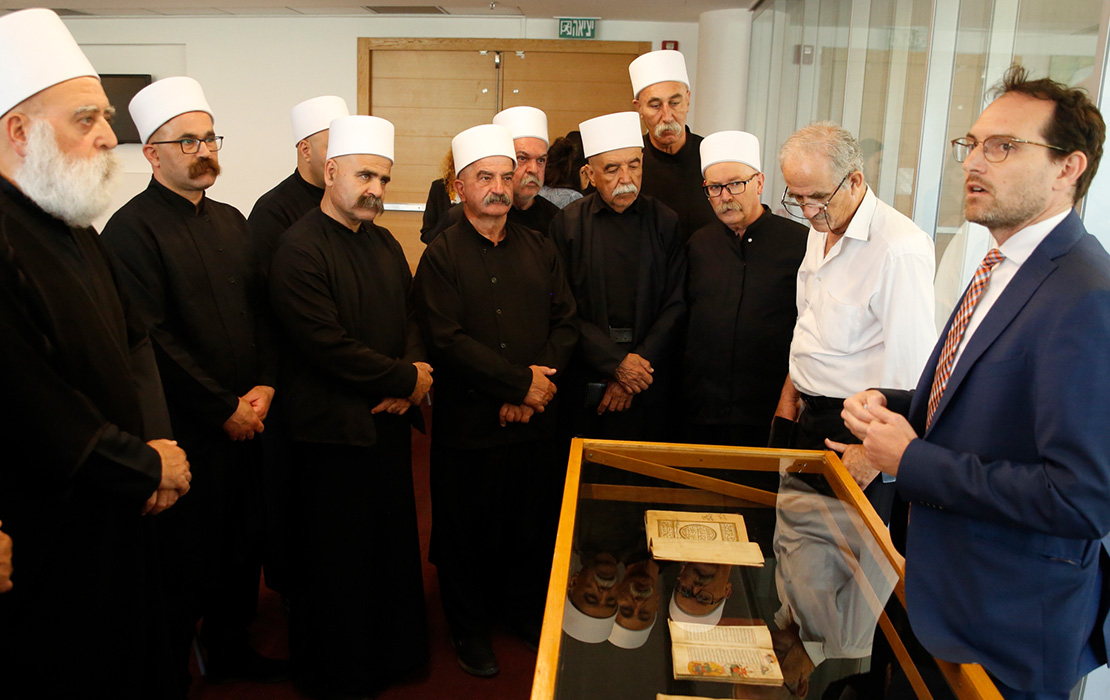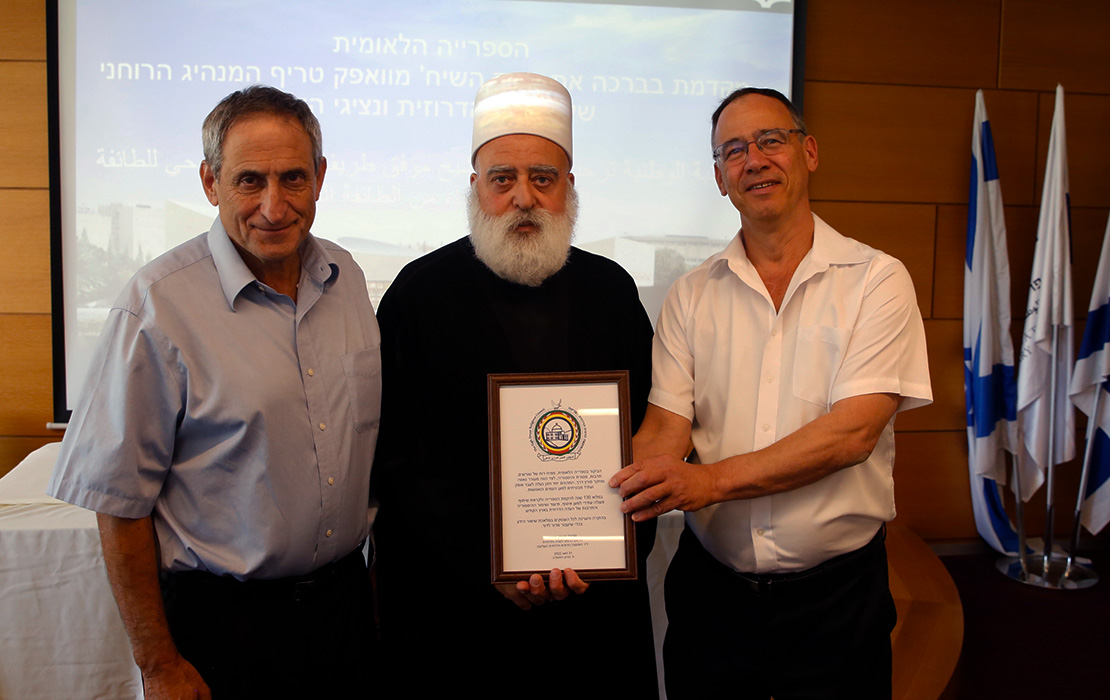The Druze faith first emerged in 11th century Egypt. Since then the Druze have had a significant impact on the history of the region. Druze communities can be found today in Syria, Lebanon and Jordan, while some 150,000 Druze live in Israel.
The Druze religion is a mystical faith in which the figures of Abraham, Moses, Jesus, Mohammed and Jethro (Shuaib) are all considered prophets. Its main tenants and holy texts are kept secret and only the community's spiritual elders are allowed access to them. Though any member of the community can undergo training to become an elder (Sheikh al-Akel), one can only join the Druze religion if one is born Druze.
The National Library of Israel preserves a number of rare antique manuscripts with connections to the history and culture of the Druze community. One of these is a text containing poetry by the prominent 10th-century Arab Shiite poet Al-Sharif al-Radi. This particular copy was commissioned for the Druze noble Fakhr al-Din II, who ruled a domain comprising southern Lebanon and the northern Land of Israel during the late 16th and early 17th centuries.
On Tuesday, May 31, a group of 30 elders of the Israeli Druze community, led by Sheik Muafak Tarif, the community's spiritual leader, visited the National Library of Israel for the first time ever to learn about the Library's treasures and become familiar with its various collections.
The delegation was given a review of the Library's renewal process which has been underway in recent years. A number of educational and cultural programs designated for Arabic-speaking audiences were also presented to the visitors. The high point of the visit was the first revealing of historic Druze texts that had never been viewed by the public.
NLI Chairman Sallai Meridor told the Druze elders that the Library aspires to give voice to the history and culture of all elements of Israeli society through its collections and archives. "Every institution and organization must promote equality in its own field, and we at the Library will make every effort to ensure that Druze citizens feel that their culture and heritage is reflected by the National Library of Israel", said Meridor.
NLI Rector Shai Nitzan added that this important first visit by heads of the Druze community to the National Library of Israel was an expression of the Library's aspiration to be an institution and cultural center that serves and comprises all groups and elements of Israeli society.
"Druze society, which has tied its fate to the fate of the State of Israel, has an important role to play, not only in fields related to matters of state security, but also in the realm of cultural contributions, for both Arabic-speaking audiences and the general Israeli public as a whole. We wish to bring the Druze community and particularly its youth – like all elements of Israeli society – closer to our content, to the collections and treasures preserved at the National Library. The visit of the community's leaders significantly furthers this goal," Shai Nitzan told the Druze elders.
Sheikh Muafak Tarif thanked his hosts and said that today, in a global age of endless sources of information and knowledge, it is important to teach and share Druze history and culture through digital means.
"With this visit, we seek to expand the existing partnership between the Druze and the Jewish people with further collaborations in the fields of education, culture and literature", said Sheikh Muafak Tarif, head of the Druze community in Israel.
The Sheikh announced that the Druze community intends to establish a national Druze library at the traditional site of the tomb of the Prophet Shuaib (Jethro), which will serve as a research and cultural center for all Druze around the world and for those who seek to study the community and its culture.

 Sign in with Google
Sign in with Google
 Sign in with Facebook
Sign in with Facebook





